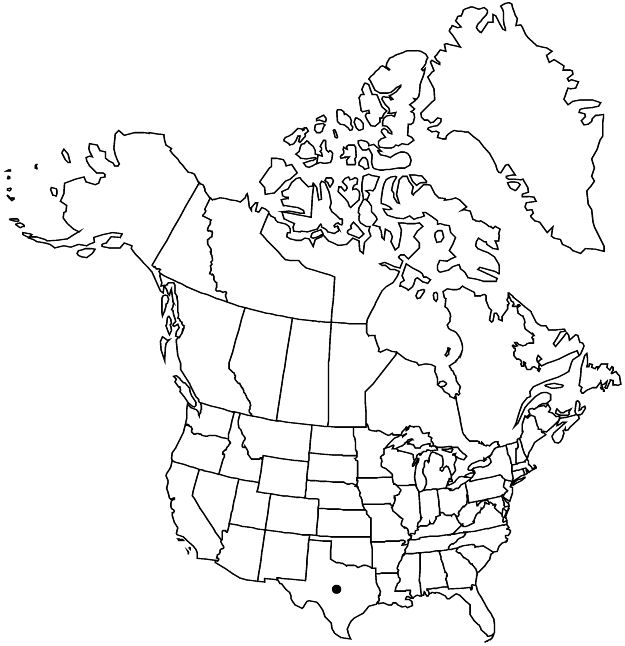Difference between revisions of "Euphorbia astyla"
Prodr. 15(2): 40. 1862.
FNA>Volume Importer |
FNA>Volume Importer |
||
| Line 55: | Line 55: | ||
|publication year=1862 | |publication year=1862 | ||
|special status=Conservation concern | |special status=Conservation concern | ||
| − | |source xml=https://jpend@bitbucket.org/aafc-mbb/fna-data-curation.git/src/ | + | |source xml=https://jpend@bitbucket.org/aafc-mbb/fna-data-curation.git/src/f6b125a955440c0872999024f038d74684f65921/coarse_grained_fna_xml/V12/V12_867.xml |
|genus=Euphorbia | |genus=Euphorbia | ||
|section=Euphorbia sect. Anisophyllum | |section=Euphorbia sect. Anisophyllum | ||
Revision as of 18:21, 24 September 2019
Herbs, perennial, with woody or fibrous-fleshy taproot, 5–12 mm thick. Stems decumbent, ascending, or erect, few to many emerging from woody crown, 5–25(–50) cm, glabrous. Leaves opposite; stipules connate into deltate scale, 0.2–0.5 mm, minutely lacerate at apex, glabrous; petiole 0–0.2(–0.3) mm, glabrous; blade orbiculate-reniform to acute-cordate, 2–5(–8) × 2–5(–6) mm, base ± asymmetric, cordate to auriculate, sometimes clasping stem, margins entire, apex narrowly acute, surfaces glabrous; 2- or 3-veined from base, but usually only midvein conspicuous. Cyathia solitary at distal nodes; peduncle 0.3–1(–1.5) mm. Involucre broadly campanulate, 0.8–1.4 × 0.9–1.4 mm, glabrous; glands 4, yellow-green to brownish, oblong, 0.2–0.3 × 0.5–0.7 mm; appendages white, flabellate to oblong, 0.1–0.2(–0.5) × 0.4–0.8 mm, distal margin entire or dentate-crenate. Staminate flowers 22–26. Pistillate flowers: ovary glabrous; styles 0.3–0.4 mm, unbranched, thickened-clavate. Capsules ovoid and broadly triangular, 1.5–1.9(–2.5) × 1.4–1.6(–2.2) mm, glabrous; columella 1.2–1.8 mm. Seeds white, oblong, 4-angled in cross section, adaxial faces slightly concave, with long raphe between, 1.5–1.8 × 0.7–1 mm, markedly foveolate, with irregular to ± parallel or anastomosing ridges. 2n = 28.
Phenology: Flowering and fruiting late spring–early fall.
Habitat: Desert, grasslands, limestone substrates, usually on very saline or alkaline soils.
Elevation: 700–1100 m.
Distribution

Tex., Mexico (Coahuila, Nuevo León).
Discussion
Euphorbia astyla is a specialist on halophytic, alkaline soils and is known in the flora area only in part of Pecos County. The species is closely related to E. jejuna but differs in its sessile or sub-sessile leaves with a cordate-auriculate base and involucral gland appendages that are not deeply lobed or cleft.
Selected References
None.